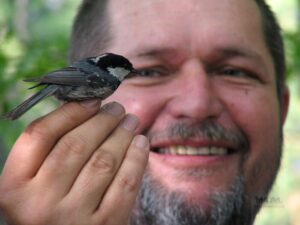2016
Alena Turini, Petr Veselý, Roman Fuchs
DOI: 10.1111/bij.12708
Abstract:
Multiple predators affect the evolution of aposematic signals in nature and these predators may substantially differ in terms of ecological and cognitive parameters. However, most experimental studies testing the evolution of Batesian mimics use only a single species of predator (usually the great tit or a domestic chick). Therefore, in the present study, we experimentally tested the responses of five passerine predators to an artificially made Batesian mimic (a cockroach equipped with the warning pattern of the red firebug) with respect to their dietary ecology. Half of the individuals of each species were fed on unmodified roaches before the experiment, whereas the other half were fed with mealworms and thus had no previous experience with roaches. We found that Batesian mimics were better protected than inconspicuous prey against inexperienced great tits and robins alone. The other three bird species showed high level of neophobia; therefore, the effect of warning coloration could not be assessed. We also found that experienced birds attacked a greater number of Batesian mimics compared to inexperienced individuals of all tested species, with the exception of blackcaps. In the great tits, robins, and blue tits, a significant number of experienced birds attacked the Batesian mimic, which was possibly the result of a learned search image for a roach. Our results suggest that using a limited array of predators to describe evolutionary processes forming the diversity of antipredatory strategies of the prey may be biased and need not describe the situation occurring in nature.



